Gaining your horse’s Trust: common challenges and how to overcome them
Gaining your horse’s trust is one of the most important things you can do to ensure a meaningful, positive relationship between you and your horse. Using consistent and kind training and providing a safe environment where all his needs are met all contribute to you building a strong bond.
Understanding how your horse perceives the world around him is crucial to building trust and developing a strong relationship with your horse. By being aware of his natural instincts and how he communicates, you can make sure you meet his needs and create a positive, supportive environment for him to thrive.
How horses perceive the world
Horses are prey animals meaning that they have evolved to be highly in tune with their environment in order to avoid danger. They have excellent vision, with the ability to see in almost 360 degrees around them, but their depth perception is not as good as ours. They are also very sensitive to sounds and smells, which they use to detect potential threats.
Horses are also extremely social animals that rely on body language and nonverbal communication to interact with each other. They are very attuned to the emotions and body language of other horses and they use all this sensory information to gauge whether a situation is safe or dangerous. They also use their own body language to communicate with other horses in the wild and with us in a domestic setting, they use ear position, tail movement, and other subtle cues to express their mood and intentions.
how this affect horses interacting with us
When it comes to interacting with humans, horses could perceive us as potential predators or as trusted herd members, depending on their past experiences and our behavior towards them. If they feel threatened or unsafe around us, they will become anxious or defensive, which can make it difficult to build trust with them. However, if we can communicate clearly and respectfully with them, and show them that we are not a threat, they are more likely to perceive us as a trusted partner and to form a strong bond with us.
How important is clear communication?
Clear communication between horse and rider is essential for building trust and developing a strong partnership between you and your horse. Horses are very responsive to your body language and tone of voice, and they use these cues to understand what you are asking of them. If your cues are unclear or inconsistent, your horse may become confused, anxious, or resistant.
To communicate effectively with your horse, it is important to use clear and consistent cues that your horse can understand. This includes using consistent body language, vocal commands, and rein aids, as well as ensuring that your energy and emotions are in line with what you are asking the horse to do.
It’s also important to be aware of the horse’s body language and reactions and to learn how to read his body language, as this can give you important feedback about whether your communication is clear or not. For example, if the horse is resistant or unresponsive to a cue, it may be a sign that you need to adjust your approach or be clearer in your communication.
Overall, clear communication is essential for building trust and developing a strong relationship with your horse. By using consistent and effective communication techniques, you can create a positive and supportive environment that will allow your horse to thrive.
How to communicate with your horse
- Use consistent cues: Horses learn through repetition and consistency, so it’s important to use the same cues every time you ask your horse to do something. For example, if you want your horse to stop, use the same verbal command and rein aid every time.
- Be clear and concise: Horses respond best to clear and concise cues, so avoid using confusing or mixed signals. Use simple language and keep your body language clear and consistent.
- Use positive reinforcement: Positive reinforcement, such as praise or treats, can be a powerful tool for reinforcing good behavior and building trust. When your horse does something you want, reward them with a kind word or a treat.
- Be aware of your body language: Horses are very sensitive to body language, so it’s important to be aware of your own body language when communicating with your horse. Stand tall, use confident body language, and avoid tense or aggressive postures.
- Listen to your horse: Effective communication is a two-way street, so it’s important to listen to your horse’s responses and adjust your communication accordingly. If your horse seems confused or anxious, it may be a sign that you need to adjust your approach.
- Practice patience: Building effective communication with your horse takes time and patience. Don’t get frustrated if your horse doesn’t respond immediately or if you encounter obstacles along the way. With persistence and consistency, you can build a strong, trusting relationship with your horse.
By following these tips and practicing effective communication techniques, you can build a strong, positive relationship with your horse based on trust and mutual understanding.


Tips for improving your communication skills
Developing a bond with your horse through care and respect is an important part of building a strong, positive relationship and gaining your horse’s trust.
Here are some tips for developing a bond with your horse:
- Spend time together: Spending time with your horse is essential for building a bond and trust between you. Spending time grooming your horse, hand-walking them, or just simply spending time in their company will form a natural bond.
- Learn about your horse’s needs: Understanding your horse’s physical and emotional needs is essential for building trust and respect. Learn about their diet, exercise requirements, and social needs.
- Provide good care: Providing good care, such as proper nutrition, exercise, and medical care, shows your horse that you respect and value them. A well-cared-for horse is more likely to trust and bond with their caregiver.
- Use positive reinforcement: Positive reinforcement, such as praise, treats, or scratches, can be a powerful tool for building a bond with your horse. When your horse does something you want, reward them with a kind word or a treat.
- Be patient and kind: Patience and kindness are key to building a bond with your horse. Avoid using harsh or punitive methods, as these can damage trust and respect.
- Build trust through consistency: Consistency is key to building trust and respect with your horse. Be consistent in your interactions, cues, and care.
- Listen to your horse: Listening to your horse and respecting his needs and preferences can help build a stronger bond. Pay attention to your horse’s body language and reactions, and adjust your approach accordingly.
By developing a bond with your horse through care and respect, you can build a strong, positive relationship based on trust and mutual understanding.
Understand your horse’s Basic needs
Understanding your horse’s needs and making sure these are all being met is essential for building trust and a positive relationship between you and your horse.
- Make sure your horse has access to adequate food, water, and shelter. Provide them with a clean and comfortable living environment, and ensure that they have enough space to move around and exercise.
- Horses are social animals and require social interaction to be happy and healthy. Allow your horse to spend time with other horses, and provide them with social activities such as grooming or hand-walking.
- Horses communicate through body language, and it’s important to understand what your horse is saying to you. Learn to read your horse’s body language to understand when they’re uncomfortable or unhappy, and adjust how you interact with him accordingly.
- Horses experience physical and emotional strain just like we do so avoid pushing your horse too hard or overworking him. Always allow them adequate rest and recovery time.
- Positive reinforcement, such as praise, treats, or scratches, can be a powerful tool for building a bond with your horse. When your horse does something you want, reward him with a pat and a treat.
- Patience and kindness are essential for building trust and demonstrating respect for your horse’s needs and boundaries. Don’t ever use physical punishment and always approach your horse with a calm and gentle demeanor.
By understanding your horse’s needs, you can build a strong, positive relationship based on trust and mutual understanding. Remember to pay attention to your horse’s signals and adjust your approach accordingly, and always prioritize your horse’s well-being and happiness.
create a safe environment
Creating a positive and supportive environment for your horse is crucial for their well-being and happiness. Here are some tips for creating such an environment:
- Make sure your horse has access to a clean and comfortable living space. This includes a well-ventilated stable or shelter, as well as appropriate bedding and adequate space for movement.
- Providing your horse with a balanced and nutritious diet is essential for their health and happiness. Consult with a veterinarian or equine nutritionist to determine the best diet for your horse’s needs.
- Exercise is important for your horse’s physical and mental health. Make sure your horse has access to a safe and appropriate area for exercise, and allow them to move around and explore.
- Positive reinforcement, such as praise, treats, or scratches, can be a powerful tool for creating a positive and supportive environment for your horse. When your horse does something you want, reward them with a kind word or a treat.
- Horses thrive on routine and consistency, so creating a regular schedule and sticking to it can help create a positive and supportive environment. This includes regular feeding times, exercise schedules, and grooming routines.
By creating a positive and happy environment for your horse, you can promote their well-being and happiness, which in turn will build a stronger bond based on trust and mutual respect. Prioritize your horse’s physical and emotional needs, and approach them with patience, kindness, and consistency.

Training your horse to gain trust
Training is an important way to build trust and a positive relationship with your horse. Here are some tips for building trust through training:
- Begin by teaching your horse basic skills, such as leading, haltering, and grooming. This will help your horse become accustomed to your touch and presence, and build a foundation for more advanced training.
- Positive reinforcement, such as praise, treats, or scratches, can be a powerful tool for building trust and motivation in your horse. When your horse performs a desired behavior, reward them with a kind word or a treat.
- Consistency is key in building trust and training your horse. Set clear expectations and goals, and be consistent in your training methods and techniques.
- It’s important to respect your horse’s boundaries and avoid pushing them too hard or too fast. Pay attention to your horse’s signals and adjust your training approach accordingly.
- Training can be physically and mentally exhausting for your horse. Take regular breaks during training sessions, and allow your horse adequate time for rest and recovery.
- Using gentle, consistent training methods can help build trust and respect in your horse. Avoid using harsh or punitive methods, which can damage your horse’s trust and respect.
- Incorporate positive experiences into your training, such as trail rides or other enjoyable activities. This can help your horse associate training with positive experiences and build trust and motivation. Do activities and play games with your horse, plan these out beforehand so you know exactly what activity you are going to do with your horse each day building up your trust in each other.

Building trust through training takes time, patience, and consistent effort. By using positive reinforcement, respecting your horse’s boundaries, and incorporating positive experiences, you can build a positive and trusting relationship with your horse. Remember to approach training with patience, kindness, and consistency, and prioritize your horse’s well-being and happiness.
Horses get used to a routine very quickly and if your horse knows that at a certain time every day, you come to work with him, he will very quickly look forward to their training sessions and come to expect them.
When schooling your horse be aware that you are asking him to use new muscles that he possibly hasn’t used before to the extent that you are asking as you ask for more and more. Horses need to understand what you are asking of them and it is very important that they have the correct muscling and can physically do what you are asking without getting sore.
Just like you horses get stiff muscles and need time for this stiffness to ease up. Never school your horse two days in a row when starting out. Have a game plan in mind of what you want to achieve that day, it most often changes when actually in the saddle but then stick to that.
If your horse won’t stay at the walk but keeps wanting to jog, that day just work at the walk in that session. If your horse won’t canter a decent 20-meter circle just work on that, get it right, and leave the arena/riding area happy. Outride your horse the next time to let its muscles have time to ease up and get strong.
Being aware of your horse physically and taking heed of that will help get your horse to trust you as you will not be pushing it too far that it is ever in pain from sore muscles and overwork.

Talk to your horse
Using an even tone of voice, talk aloud to your horse. Some people may feel self-conscious doing this but the tone of your voice can put your horse at ease. Your voice will become familiar and reassuring, especially in times of stress – you being constant and reassuring is something your horse will appreciate.
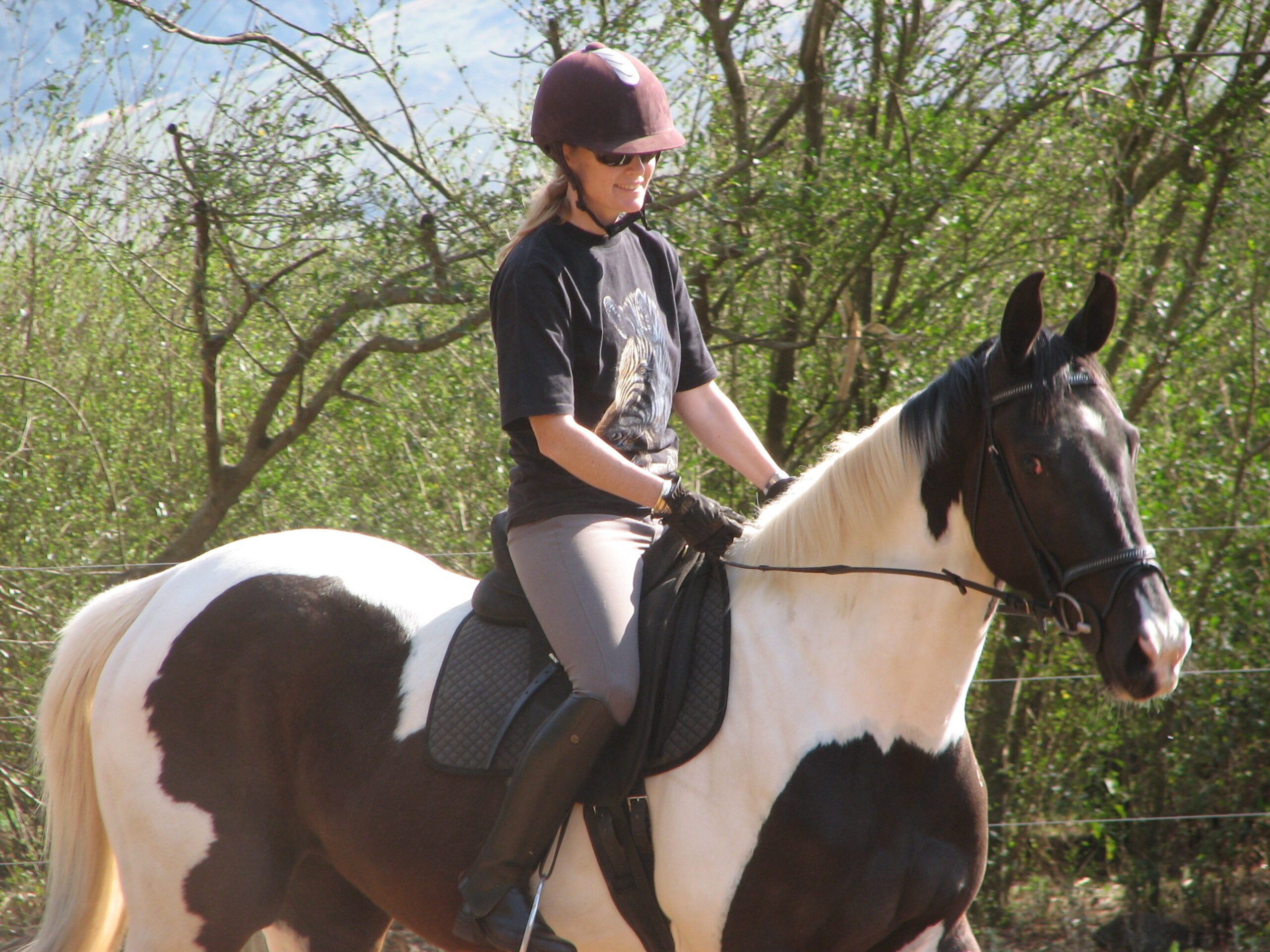
Use relaxation exercises
- When you are grooming your horse run your hands all over his body in a confident reassuring way. You will read his body language of where he feels uncomfortable on his body with you touching him. Don’t shy away from these places, rather spend more time there being more gentle but persistent and talking to him.
- Stand facing the same direction as your horse at his head. Hold his lead rope in your right hand and gently ask him to drop his head by applying pressure on his halter/bridle. As soon as he drops his head release the lead rope, this touch must be instant and practicing this often will help your timing. When he learns to respond to you like this you will be able to do this when he is feeling tense, dropping his head helps take away that tension as when tense he will be carrying his head high.
- Horses like to be scratched or stroked this is how they interact with each other, when they groom each other they scratch each other with their teeth. They really do enjoy a good scratch, most horses have a ‘sweet spot’ where you will see them lift their heads and play with their top lip. This means you are scratching a particularly good spot. My first stallion, Carrick, was not an affectionate horse but he really loved to be scratched. Even over his stable door, he would position himself so that I could reach his neck at the start of his shoulder and he would spend hours letting me scratch him, it was the only time that he really responded to love and attention so it was something that I did a lot with him. Most of the time I was in the stable with him but when in a hurry I would give him a quick scratch over the stable door which he loved.
build your horse’s confidence
If your horse has specific things that frighten him – tackle that head-on with an action plan in mind. One of my favorite mares had an all-encompassing fear of water, she was bomb-proof with everything else but she would not go near water, interestingly her mother was the same, completely laid back about anything else but not about water.
I spent a lot of time with her getting her slowly used to water. I first asked her to walk past the water without falling to pieces and then into a tiny puddle of water with me on foot and slowly over time got her to not be afraid of water. It took a lot of patience and reassurance from me for her to be confident around water but we did get there, she always had a fear of water but because she trusted me she would go through it.
Take small steps
Don’t ask too much of your horse too quickly. Training takes time both mentally and physically. If your horse starts acting out it is usually because too much has been asked of him and he is either in pain or doesn’t understand what you are wanting him to do.
- Start working with what he already knows. Doing this means you aren’t pushing him mentally as he is comfortable at this level and you can ask for a bit more every time without it becoming an issue building up his trust in you because you haven’t asked for too much.
- Don’t rush your horse, again he will let you know when you are asking too much by acting out somehow.
- Build up to each exercise in steps and stages, something small can be learned every day, and slowly you will make progress at the right speed for your horse.
- If he is not ready to jump that jump or do that more advanced dressage movement be okay with that, pushing him will only cause problems in the long run and will certainly cause him to not trust you.
Reward the successes
When your horse does get something right that you have been training him to congratulate him – tell him with your voice and body language and a scratch on the neck that he has done well. If you are gaining his trust he will want to do what you are asking of him because he does want to please you.

Giving him healthy treats such as carrots and apples can be a great way to reward him.
Make sure you give him treats at only certain times. Too many treats all the time can cause him to become spoilt and beg for treats by banging on his stable door or nipping at you to encourage you to give them their treat.
I always give my horses a carrot when finished riding for the day. They knew this is when they got their treat and not before and would look forward to it.
Building your horse’s trust is what good horsemanship is all about. Working together with your horse builds an amazing bond and when there is an unseen problem or situation that comes about your horse will naturally trust you to tell him what to do and he will listen to you because he knows you have always seen him right.
Trust works both ways between you and your horse and makes the connection you have with your horse very special and what spending time with your horse is all about.
How long does it typically take to gain your horses trust?
This will depend on the horse and the circumstances you find yourself in. If your horse has been handled well since birth it will be most inclined to trust you and once it settles into its new environment its inclination will be to trust immediately. If your horse has been abused or just passed from yard to yard it will take months and even years to trust but every day that you are kind and consistent is a day closer to your horse trusting you.
What are the most common trust issues horses might have?
Horses can have a general fear of humans or certain objects like my mare above was scared of water, past trauma or abuse and lack of socialization and training all contribute to their lack of trust.
Can you still ride your horse while building trust?
Absolutely! Riding your horse is a great way to gain his trust and strengthen your bond as long as you do so in a safe and respectful manner.
More reading…
How to Get Your Horse to Trust You: 10 Steps (with Pictures)


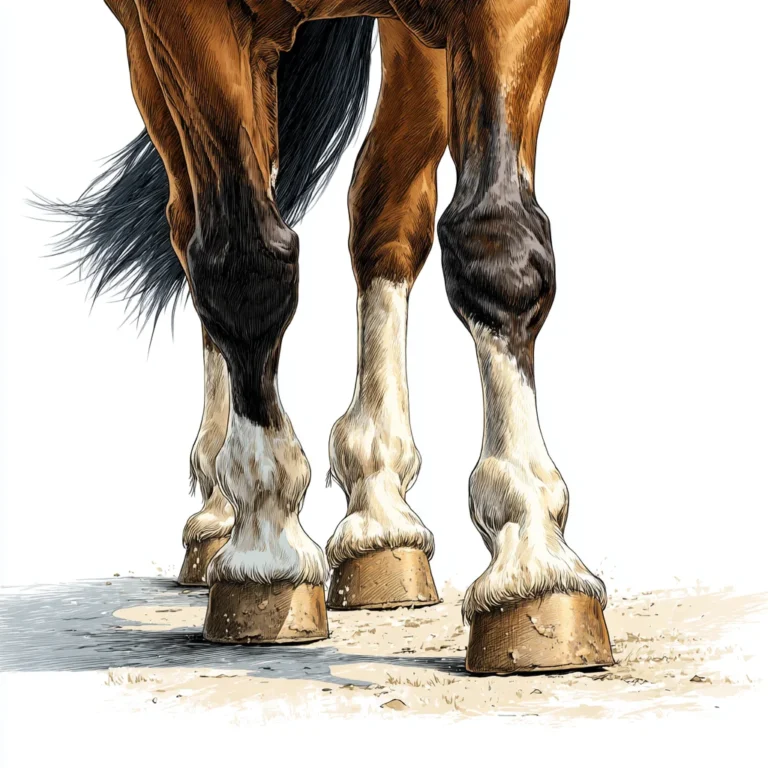
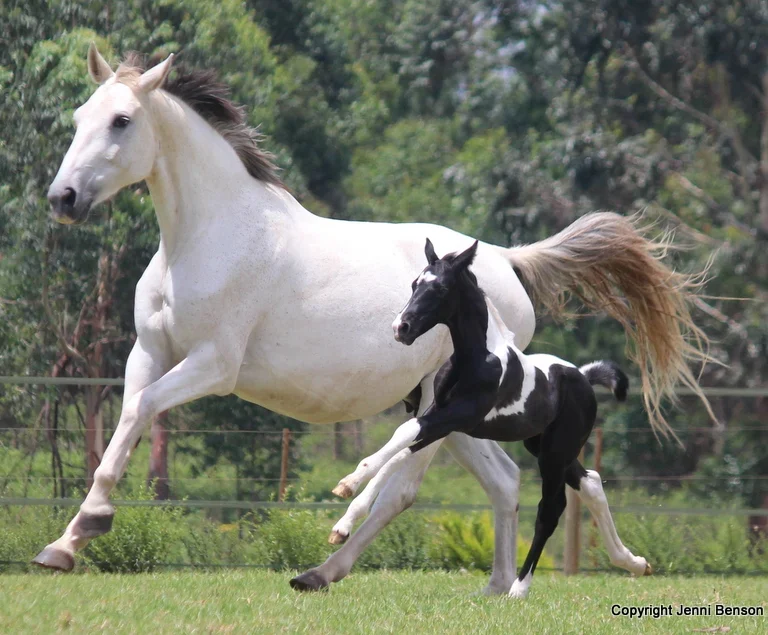
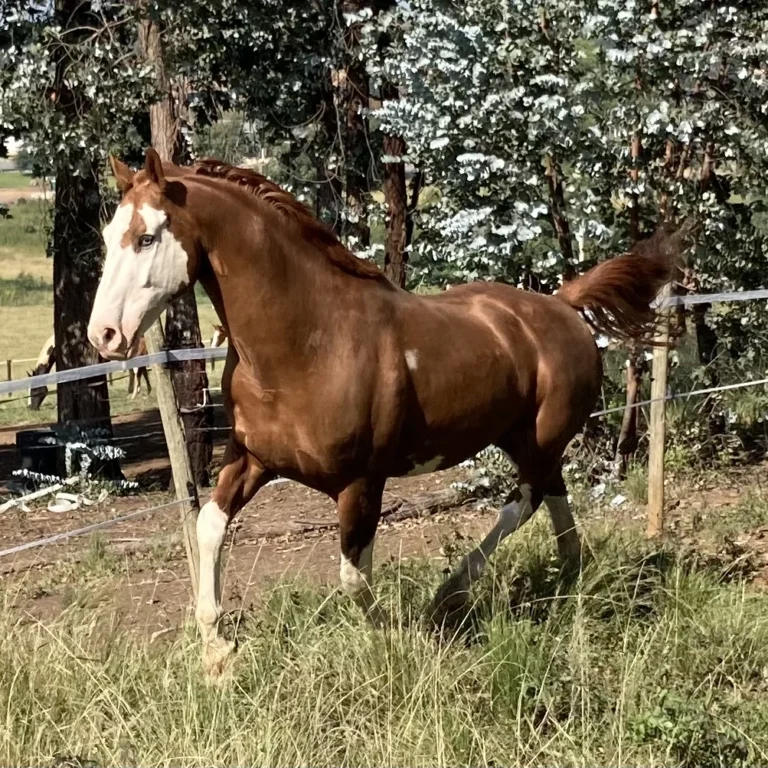
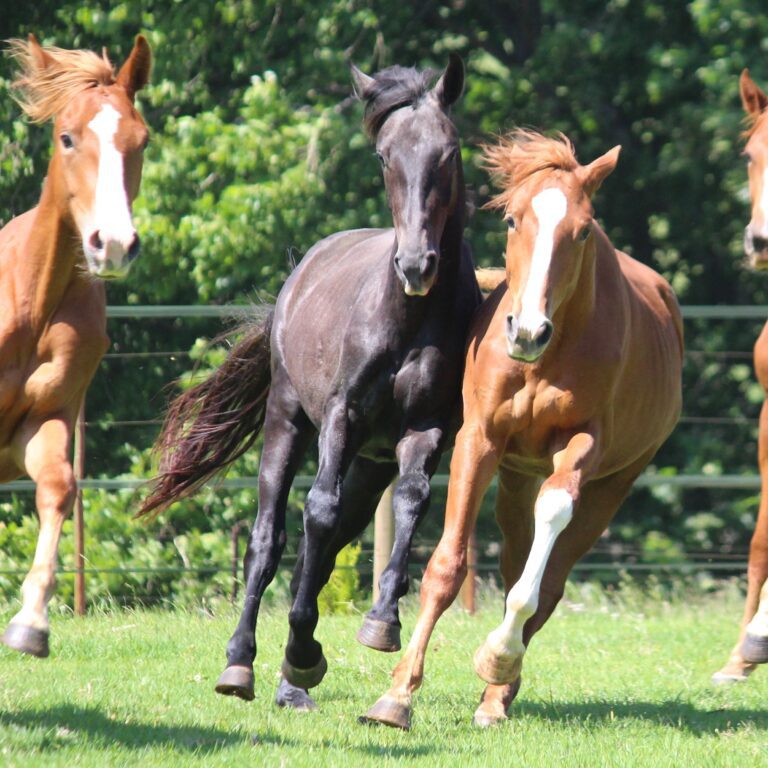

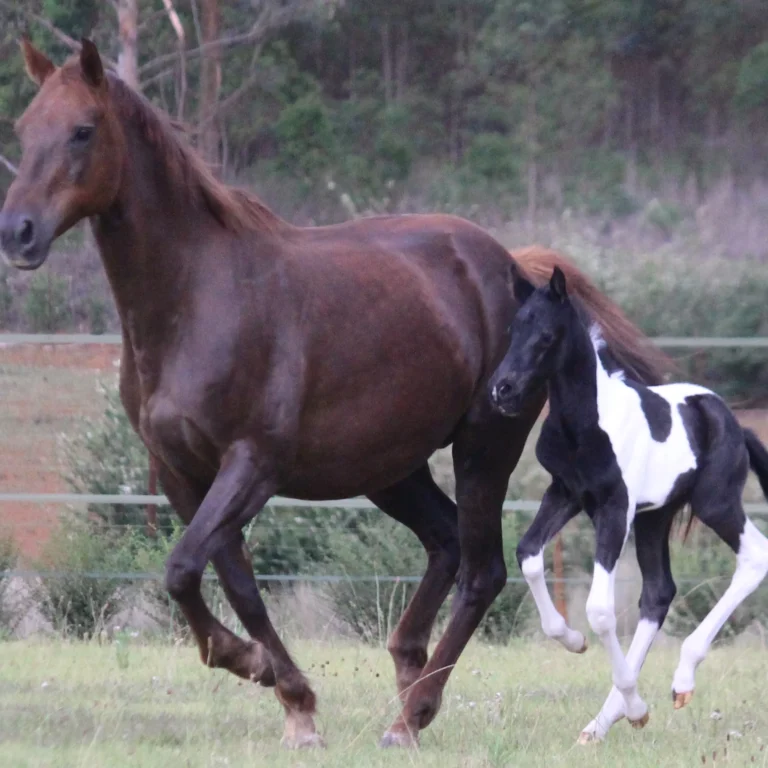
One Comment